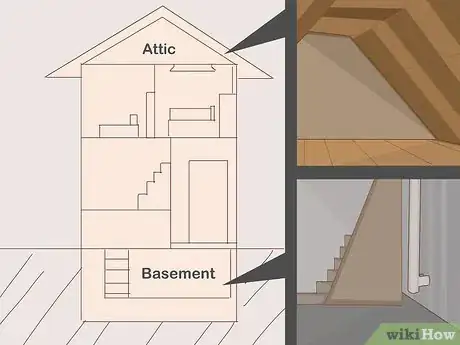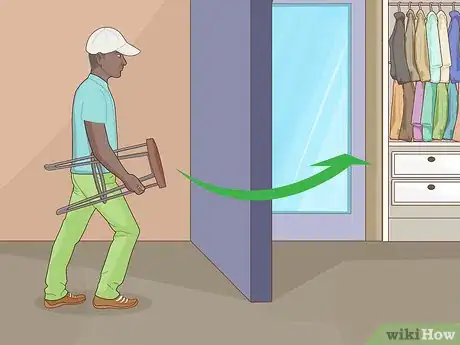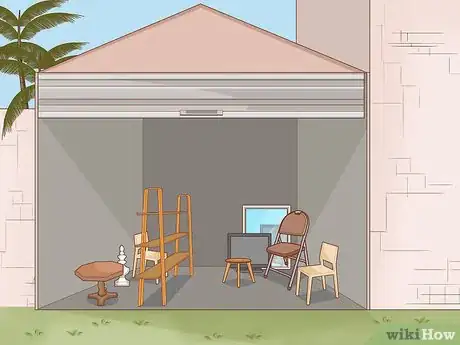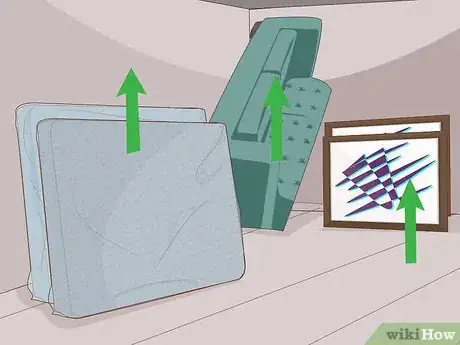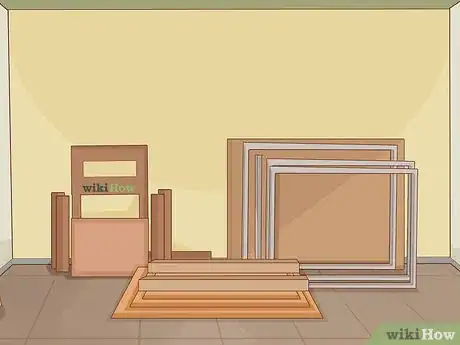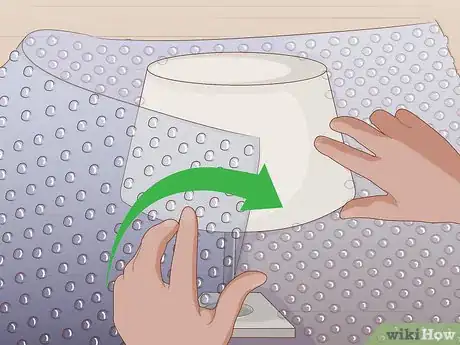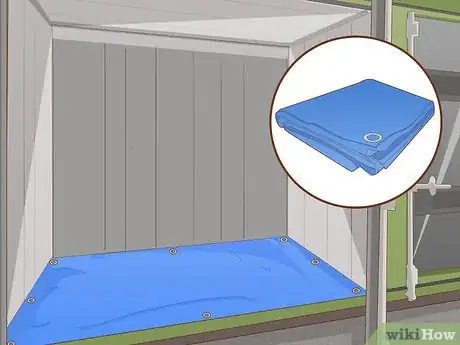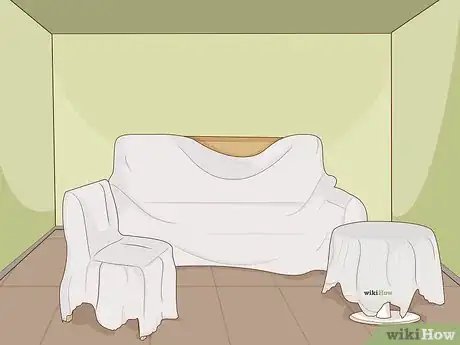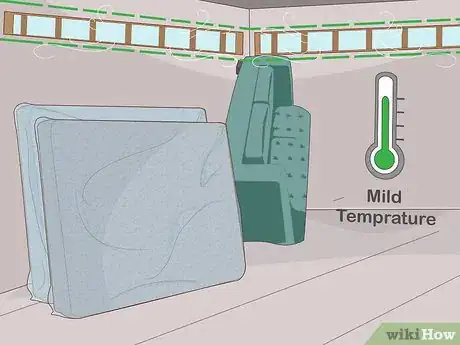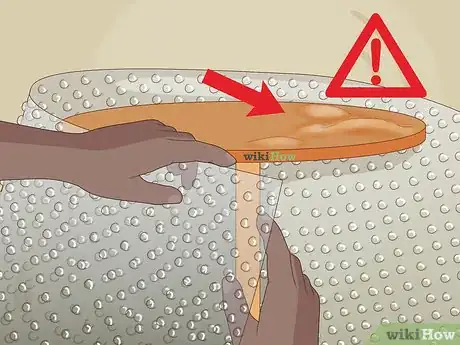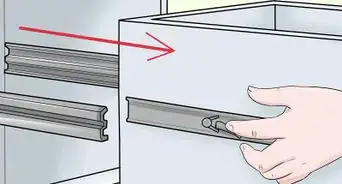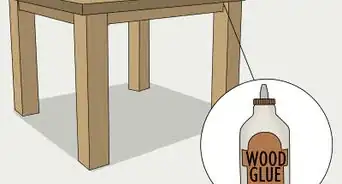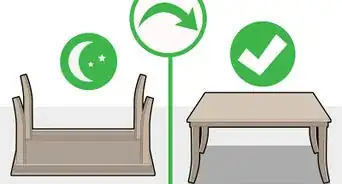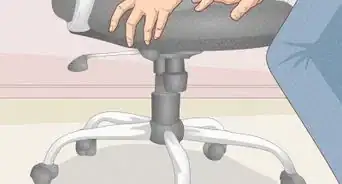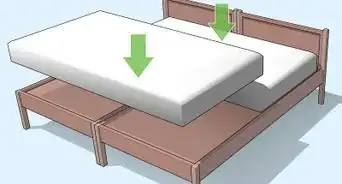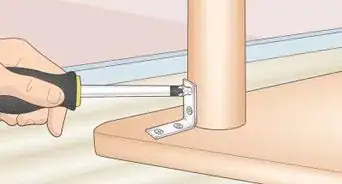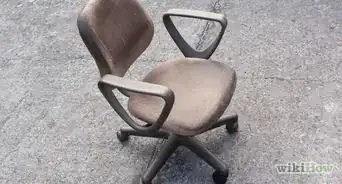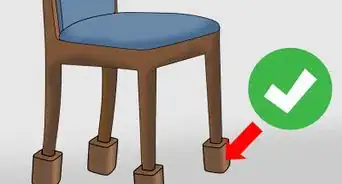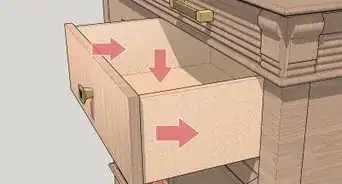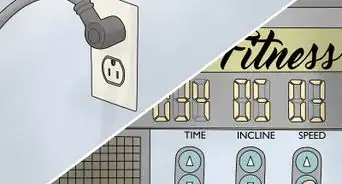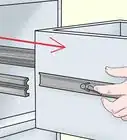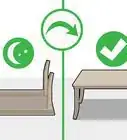This article was co-authored by wikiHow Staff. Our trained team of editors and researchers validate articles for accuracy and comprehensiveness. wikiHow's Content Management Team carefully monitors the work from our editorial staff to ensure that each article is backed by trusted research and meets our high quality standards.
There are 9 references cited in this article, which can be found at the bottom of the page.
This article has been viewed 32,299 times.
Learn more...
Furniture takes up a lot of space, especially as it accumulates over the years. If you’re looking to remove excess clutter from your home but aren’t quite ready to get rid of a piece of furniture for good, your next move is to find some out of the way place to store it. No matter where you decide to store your furniture, it’s essential to take steps to keep it in good condition and maximize your space both around your home and in your storage area. You can do this by breaking down and storing furniture as efficiently as possible, protecting delicate items and finishes and using a few helpful tricks to stay organized.
Steps
Finding a Place to Store Your Furniture
-
1Rent a storage unit. If you don’t have enough room in your home to keep unneeded furniture, or if you need to get it out of the way in the long term, your best bet will be to secure a dedicated storage unit. Commercial units come in various sizes, allowing you to choose a space that best suits your needs, and usually come equipped with other features like climate-controlled spaces and sometimes even damage insurance.[1]
- Storage units will be useful for people who want to keep a lot of furniture in one place.
- You’ll continue to rack up fees the longer you keep your furniture in storage, so it may benefit you financially to come up with a long-term plan for your pieces.
-
2Use an attic or basement. See if there’s enough room for miscellaneous items in the upper or lowermost areas of your home. Attics and basements can be quite convenient, since they tend to be well-insulated, and you won’t have to go far to move the furniture in and out of its new.[2]
- A handful of odds and ends like an unused dining set or your grandmother’s antique bedside table may not be worth the monthly fees required to rent a storage unit. Keeping them somewhere out of the way around your home is a smart move.
- Survey your home’s extra space before you start moving things in and out. Some attics or basements have steep stairs and small entryways, which can make them impractical for storage purposes.
Advertisement -
3Stash smaller items in a closet. Closets are another storage option that work best for compact and single pieces of furniture. Take apart a coffee table and slide it into a nearby supply closet or stack chairs or cushions against the back wall. They can remain there until you find a use for them, or decide to sell them off or donate them.
- An average-sized closet can be used to store light fixtures, stools or boxes of cookware and decorations.
- Make sure not to clutter up the closet if its one you use frequently.
-
4Make room in the garage. If space permits, set aside a corner of a freestanding garage or work shed to stow hard-wearing furniture, like card tables, folding chairs and metal and plastic outdoor pieces. Extremes in temperature aren’t good for wood and upholstery, but you should have no problem leaving solid synthetic materials in a minimal structure indefinitely.[3]
- Allow ample space between stored furniture and vehicles, tools and other equipment.
- One advantage of storing furniture in a garage or shed is that you’ll have all the tools you need on hand to take things apart and put them back together.
Storing Furniture Safely and Efficiently
-
1Store large pieces vertically. Turn sofas, mattresses and long, low cabinets on their ends and stand them up around the edge of the storage space. Fit the upright furniture close together to reserve valuable territory for broad, heavy and oddly-shaped pieces on the floor. This is a much more effective use of space, as it frees up more area for storage and allows air to flow between items.[4]
- Cover wobbly items in bubble wrap or towels and use them to brace one another.
- Paintings and mirrors should also be situated vertically, as it’s possible for them to collapse under their own weight over time when laid flat.[5]
-
2Disassemble everything you can. One common mistake people make when storing furniture is to simply throw it into the storage area as-is, not realizing that they can break them down and strategically arrange their parts to be less obtrusive. Most tables, beds, cabinets and lamps can and should be dismantled whenever possible. In many cases, you can as much as double your storage potential by breaking your furniture down into its smallest form first.[6]
- Group disassembled items into clusters and keep them close together to avoid losing or confusing any parts.
- Keep track of screws, bolts, hinges and other minuscule pieces by placing them in a plastic bag and taping them to the furniture somewhere visible.
-
3Wrap delicate items. Whenever you’re moving and packing furniture close together, there’s a chance that it could become damaged. Swaddle less sturdy pieces like lamps, end tables, stools and vases in cushioned materials to keep them from breaking. Padded furniture covers, bubble wrap or plush towels and blankets all work well for this purpose.
- As much as possible, wrap items individually, rather than in bundles.
- Leave some distance between fragile objects and avoid stacking or leaning them together.
-
4Line the floor. Drape a few plastic tarps or moving blankets over the floor of the storage area. This will spares delicate pieces a lot of wear-and-tear while at the same time defending domestic floors from scratches. A plastic tarp can also act as a barricade, blocking out moisture and buffering extreme temperatures.[7]
- If you have items that you’re especially concerned about damaging, use wooden pallets to elevate them off the floor.[8]
- Track local weather conditions and take precautions against flooding. Standing water can ruin furniture if it’s not dealt with swiftly.
Protecting Against Environmental Conditions
-
1Use furniture covers or drop cloths. Covering all major pieces of furniture as soon as you put them into storage can keep them from undergoing drastic changes in temperature and limit the amount of moisture or dryness they’re being exposed to. This will be especially important for wood and other organic items, as well as metals that can rust or tarnish.[9]
- Furniture covers also prevent dust from settling on items that are in storage for long periods of time.[10]
- It’s usually best not to completely seal items in plastic, as escaping moisture can become trapped and cause mildew.
-
2Keep your storage area at a mild temperature. If you’re already paying for a storage unit, it may be wise to spring for one that’s climate-controlled to ensure that your furniture stays in good shape. If you’re storing furniture in your home or another area, make sure that the space you choose is well-ventilated and doesn’t get too hot or cold. Temperate, airtight surroundings will greatly benefit the lifespan of your furniture.[11]
- Heat can warp or even melt certain materials, while cold can cause others to dry crack, splinter or dry out.
-
3Watch out for moisture. Moisture causes almost all fabrics and materials to deteriorate at a much faster rate. It’s also hospitable to bacteria and mold, which can lead to the discoloration of upholstered items and give them an unpleasant smell. Before you store a given item, make sure it’s completely dry and have a way of covering it or otherwise protecting it from moisture, environmental or otherwise.[12]
- Check for leaks, drafts or any other defects in the storage space that may let harmful moisture in.[13]
- Even without the risk of mildew, wood furniture can warp, swell or split when it’s exposed to moisture.
Warnings
- Certain animals and insects like rats, moths and termites have been known to feed on furniture made from natural materials. In addition to moisture and harsh temperatures, do your best to keep stored furniture safe from destruction at the hands of hungry pests.⧼thumbs_response⧽
Things You'll Need
- Self-storage unit
- Garage or large work shed
- Easily accessible basement or attic
- Closet space
- Furniture covers
- Drop cloths
- Bubble wrap, moving blankets or towels (for protection)
- Plastic floor lining
- Wooden pallets
- Various tools for disassembling and reassembling furniture
- Cool, dry conditions
References
- ↑ http://lifehacker.com/5859303/how-do-i-choose-a-storage-unit
- ↑ https://www.bobvila.com/articles/264-how-to-store-your-things/
- ↑ https://www.lowes.com/projects/organize-store-and-move/garage-storage-organization-ideas/project
- ↑ https://www.extraspace.com/Storage/Tips/How-to-store-furniture.aspx
- ↑ https://www.extraspace.com/Storage/Tips/How-to-store-furniture.aspx
- ↑ https://www.angieslist.com/articles/8-tips-preserve-your-furniture-while-storage.htm
- ↑ https://www.angieslist.com/articles/8-tips-preserve-your-furniture-while-storage.htm
- ↑ https://www.extraspace.com/Storage/Tips/How-to-store-furniture.aspx
- ↑ https://www.extraspace.com/Storage/Tips/How-to-store-furniture.aspx

